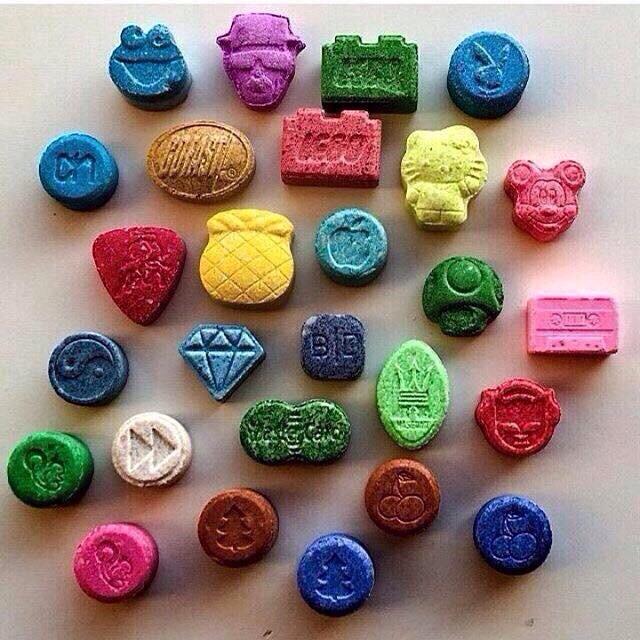
ECSTACY
According to the National Institute for Drug Abuse, Ecstacy also known as 3,4-methylenedioxy-methamphetamine or MDMA is a synthetic drug that alters mood and perception (awareness of surrounding objects and conditions). It is chemically similar to both stimulants and hallucinogens, producing feelings of increased energy, pleasure, emotional warmth, and distorted sensory and time perception.
What caught my attention is how these drugs were designed to entice users. They could deceive children or adults alike into taking what seem to look like candies or chewable vitamins.
The deaths of the 5 individuals who attended Close Ups outdoor concert at the SM Mall of Asia caused a great anxiety to parents like me towards our safety and that of our children. Do we have enough information to educate them of the dangers that these drugs could bring and how can they avoid it?
The Foundation for Drug Free World discusses the history of the drug.
Ecstasy was originally developed by Merck pharmaceutical company in 1912. In its original form, it was known as “MDMA.” It was used in 1953 by the US Army in psychological warfare tests, and then resurfaced in the 1960s as a psychotherapy medication to “lower inhibitions.” It wasn’t until the 1970s that MDMA started being used as a party drug.
By the early 1980s, MDMA was being promoted as “the hottest thing in the continuing search for happiness through chemistry,” and the “in drug” for many weekend parties. Still legal in 1984, MDMA was being sold under the brand name “Ecstasy,” but by 1985, the drug had been banned due to safety concerns.
Since the late 1980s, Ecstasy has become an embracive “marketing” term for drug dealers selling “Ecstasy-type” drugs that may, in fact, contain very little or no MDMA at all. And while MDMA itself can produce harmful effects, what is called Ecstasy today can contain a wide mixture of substances—from LSD, cocaine, heroin, amphetamine and methamphetamine, to rat poison, caffeine, dog deworming substances, etc. Despite the cute logos dealers put on the pills, this is what makes Ecstasy particularly dangerous; a user never really knows what he is taking. The dangers are increased when users increase the dose seeking a previous high, not knowing they may be taking an entirely different combination of drugs.
Ecstasy most commonly comes in pill form but can also be injected and taken in other ways. Liquid Ecstasy is actually GHB, a nervous system depressant—a substance that can also be found in drain cleaner, floor stripper and degreasing solvents.
The news took social media by storm, recently a photo of the drug was posted in the facebook page of Tricia Faustino with a warning, “Parents, these are how ecstasy pills look like. Warn your kids, educate them about the dangers and how to avoid deception. #justsayno“ which elicited various opinions from readers:
“Yes a candy that costs 2,500 each. It may look enticing but with the hefty price for sure the person knows what it is before taking it. It’s not given out for free.“ – Dreal Mckoi, Cebu City
“ Grabe parang Flintstones lang.“ – Ejay Araneta
“ These are not given to little kids. Teens and adults buy these.. Yes, they buy these, for P500-1500 per piece or even higher. They know these are not regular candies. They know exactly what they’re buying. The sooner you accept that your children made their choice and were not deceived, the more effective you can be in addressing the problem. and also, you missed the capsule forms completely.” – Jason A. Peñaranda
According to the autopsy report conducted by the National Bureau of Investigation medico legal officer Wilfredo Tierra in an interview with the PDIs Aie Balagtas See, the victims Bianca Fontejon, who was only 18 years old; and Lance Garcia, aged 36; had died of a heart attack.
He clarified, however, on Wednesday that the two did not die solely of a heart attack, saying their deaths were unusual because all their internal organs failed. According to Tierra, there was bleeding and swelling in the victims’ brains and large intestines while there were also signs of hemorrhage in a big portion of their lungs.
Tierra went on to say that based on the condition of their hearts, it was also the first time that the victims had suffered a heart attack. A “normal heart attack” would only change the organ’s color from pink to slight brown, not black like the victims’. This was the first time he has seen a case like this in the 20 years of performing autopsies. The NBI are still awaiting for the report on what had caused the bleeding from the toxicology and dangerous drugs test.
So, is this the euphoria that you’ve been looking for?
If you or you know someone who might be needing help, you may call the following hotlines to speak to a patient, listening ear:
Manila Lifeline Centre:dma Call 02-896-9191 or 0917-854-9191.
The Natasha Goulbourn Foundation: Call 02-804-HOPE (4673) or 0917-558-HOPE (4673). You may also use their toll-free number for all Globe and TM subscribers, at 2919. Visit their website athttp://www.ngf-hope.org/contact-us/
